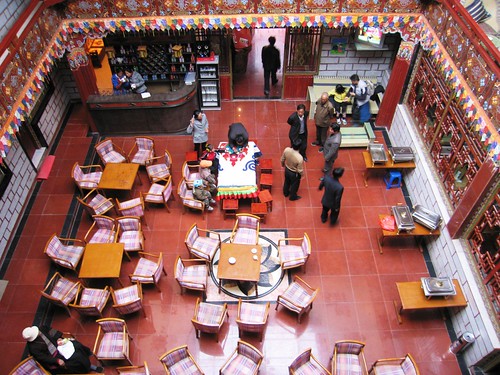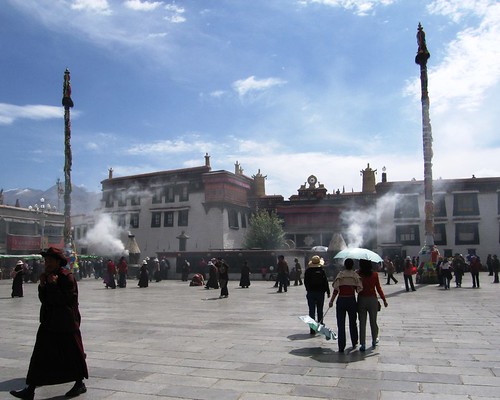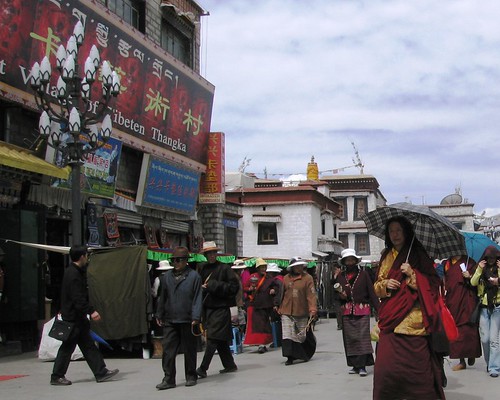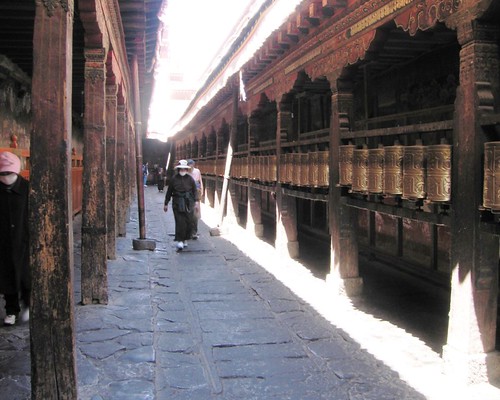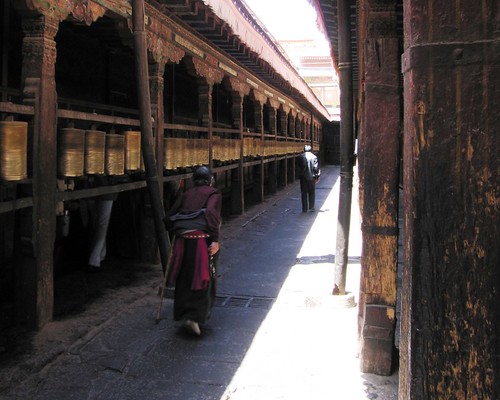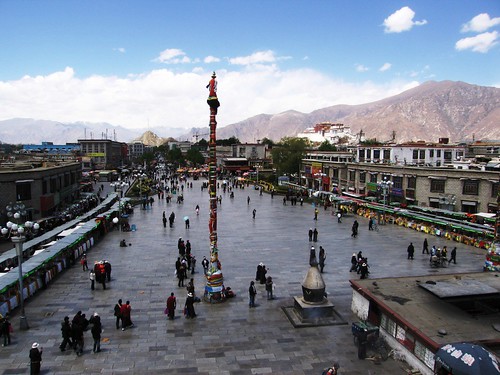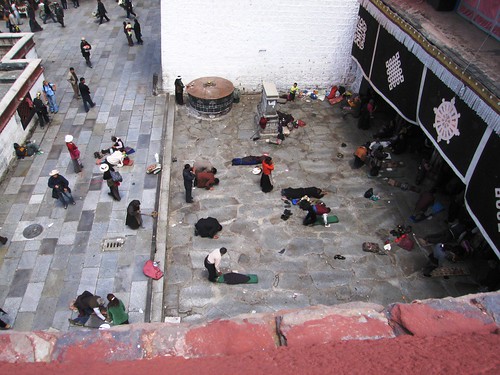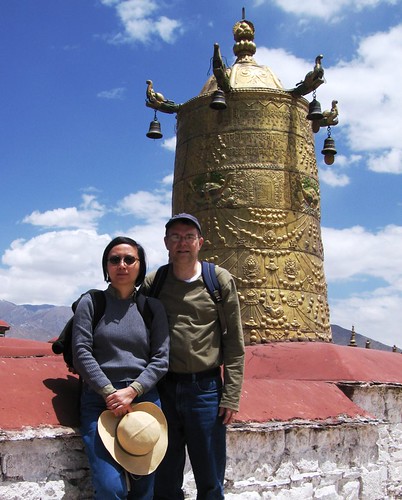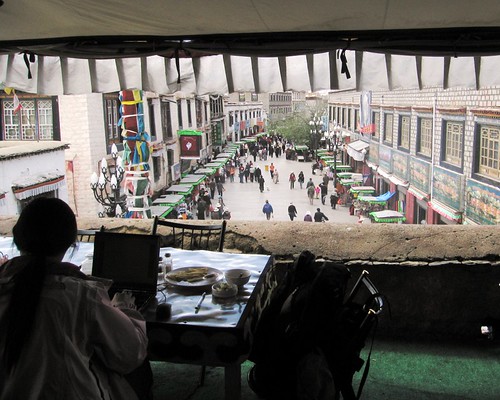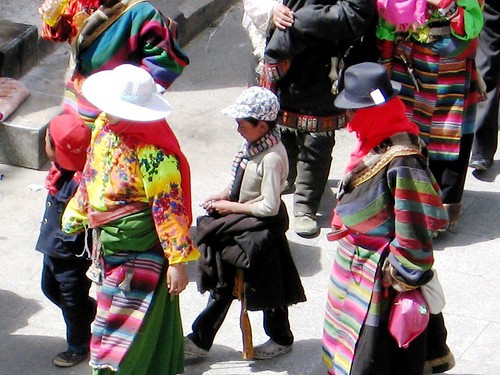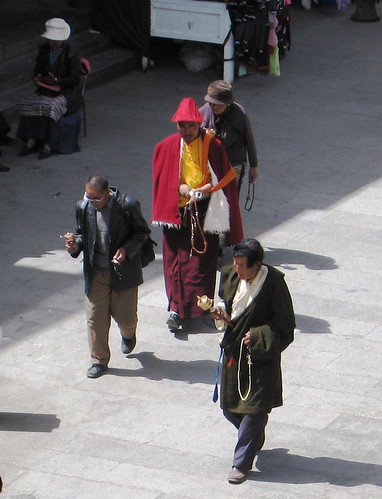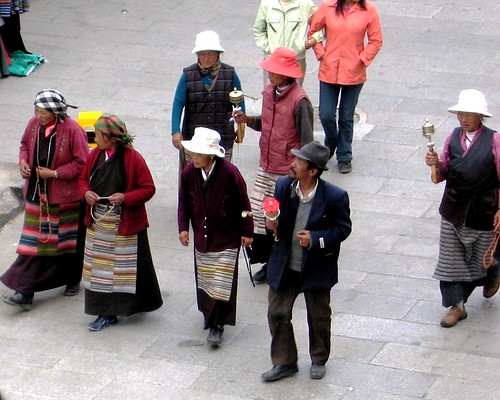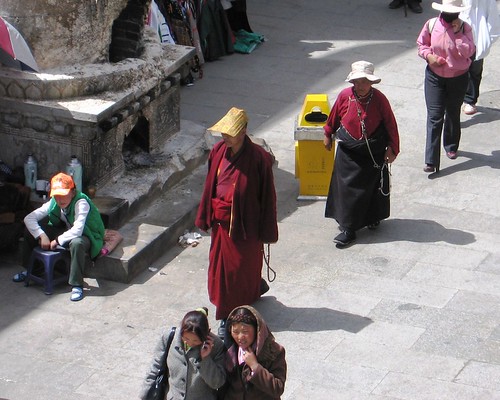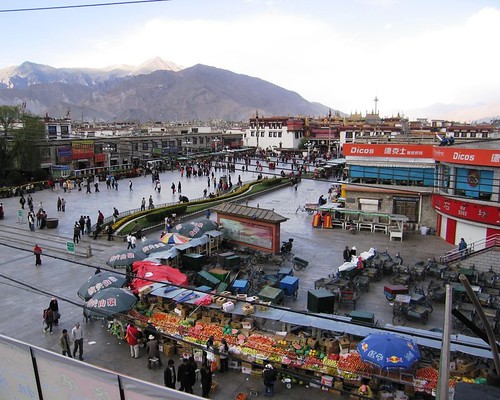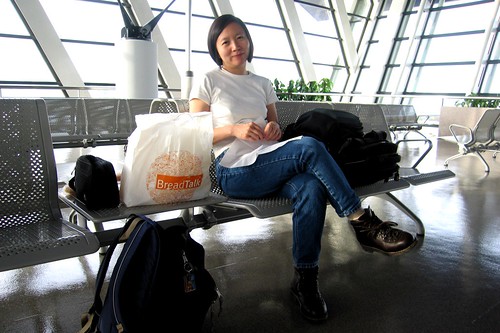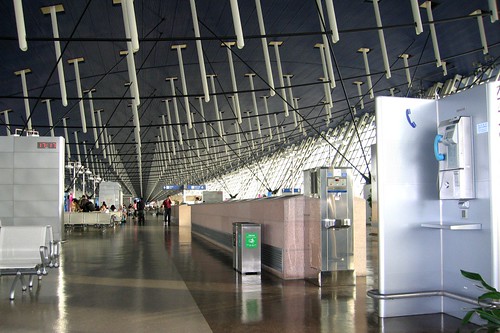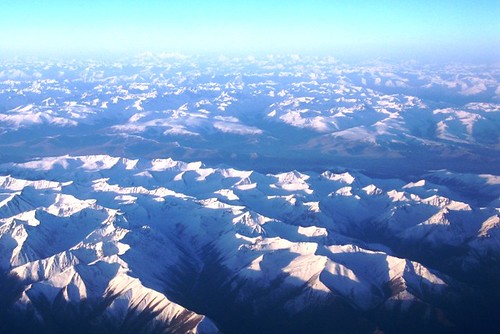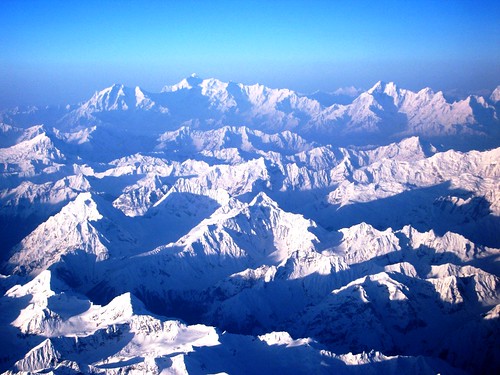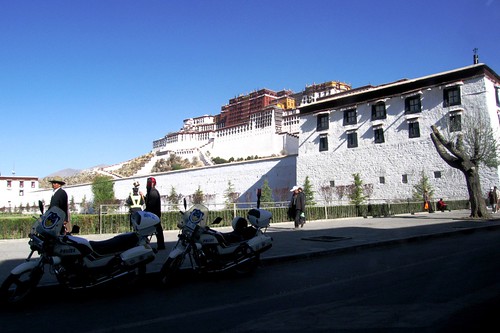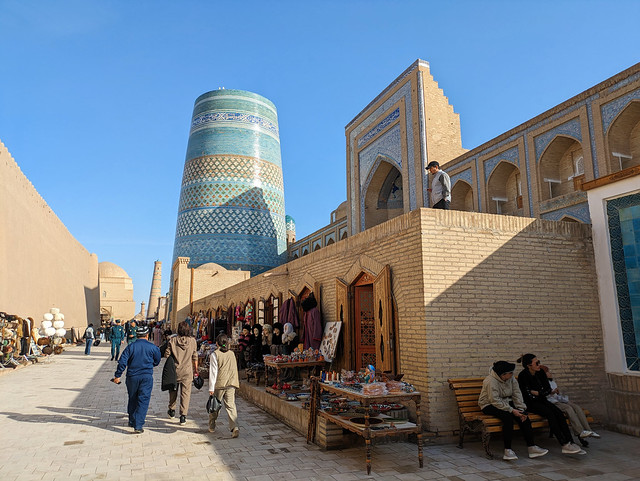The plan for the day was to visit Drepung Monastery. Period.
Up at 9:00 AM. Sun-Ling had another bad night sleeping or “not sleeping night”. Had breakfast at the same spot as yesterday with the addition of youtiao (fried bread sticks) for 5Y total. Then over to the Summit Café for coffee: 1 T Latte, 1 Tall Cappuccino, and a freshly baked pastry for 52Y.
We walked directly to Beijing Dong Lu and hired a taxi (20Y) to take us to Drepung Monastery, 8 km to the west, our main event of the day. We were dropped off almost at the top of the entrance road. Paid the entrance fee 60Y each. Later paid 20Y to take photos in the main assembly hall. Drepung Monastery was founded in 1416.
After a clockwise circuit of dorms and other buildings, we arrived at the main assembly hall just as most of the monks were filing out for a stretch before lunch. I guess it had been a hard morning of praying.
The main assembly hall, or Tsokchen, is a large space with a roof supported by 180 wooden columns.
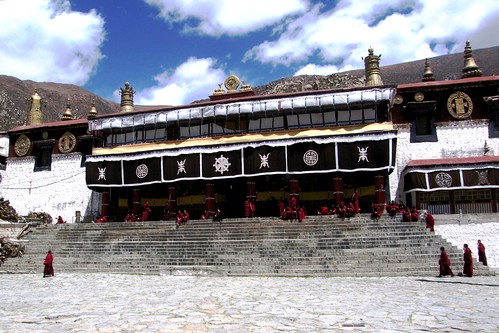
We went inside the mostly empty assembly hall, made a clockwise circuit and noticed a few things that made us think we had arrived just in time to watch the monks eat lunch. The monks began to file back into the building. The younger monks, pre-teen boys, carried in large bags of buns which they distributed up and down the rows. Then out came the eating bowls as teenage monks walked down the aisles with big buckets of what looked like potato curry and ladled it into the bowls. The monks ate the buns and curry with chopsticks. It was very quiet. No talking, no slurping, no clicking.
Also herbs were burning in a pan at the side entrance to the building and there appeared to be about 100 bricks of ganja stacked by the front door. Strange. I did not know of this practice.
After lunch the monks practiced reading scriptures, reading them independently. This assembly hall was about 50% full of monks, maybe a total of 300. After watching the monks for an hour, we noted that some of them had cell phones tucked in their robes and looked to be text messaging.
Back outside, we ate our lunch and took a photo of am old women who was collecting plastic bottles to recycle.
The monks had given her some potato curry. Maybe she hangs out there all the time.
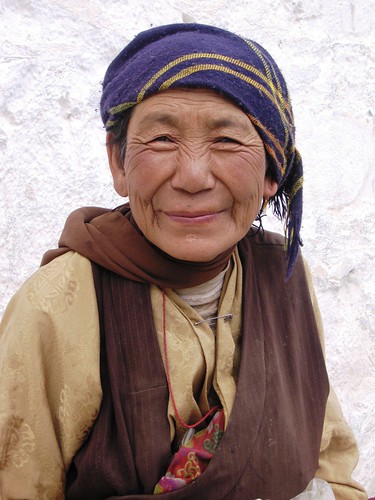
There is a huge kitchen next to the temple, but I did not want to pay 20RMB to enter and take photos.
Then we climbed to the top of the uppermost temple. Rested. Magnificent views of the valley. Took some photos. Sheep were grazing at the base of these buildings. There were a fair number of pilgrims on the circuit with us. They have lots of energy. More than us.
On leaving, there were no taxis at the upper drop off, so we rode down to the main rode in the back of a truck with an energetic group of Spanish speaking young men. We then caught bus #302 back to town (5Y total). It took the “scenic route” so we had a free tour of the city.
We went directly to dinner at a Muslim noodle place on the corner of Barkhor Square. It is run by a Chinese couple. We ate 2 very tasty noodles dishes (noodles and “food” served in separate bowls) and 2 cold dishes for 32Y total.
Then back to the hotel. We were both exhausted. Too tired to wash. We just sat on the inside balcony and watched the locals down in the courtyard. The hotel is opening a bar and restaurant and it’s a festival! Eventually we regained some energy, showered, and went to bed.
Here is the day's story in photos.
Drepung: Sun-Ling resting in front of the Ganden Palace, home to the 2nd to 5th Dalai Lamas.
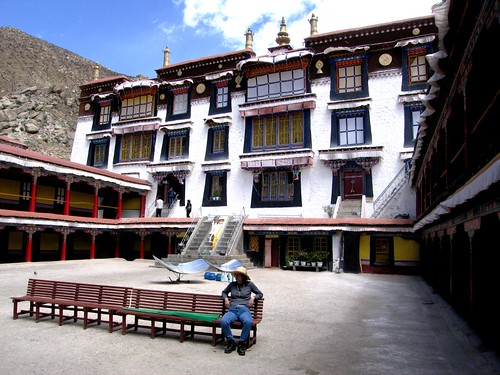
Drepung: Monasteries were not immune from Party politics.
Note the Chinese characters on the upper left which Sun-Ling could not completely translate but is pretty sure it’s an army recruitment slogan.
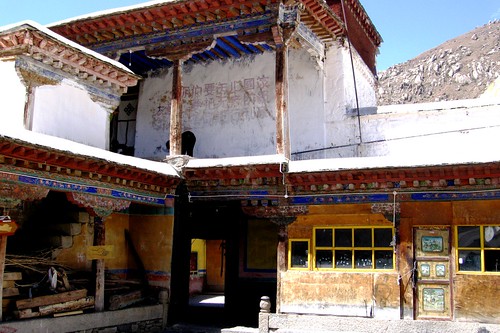
Drepung: Monks resting before lunch. You can just see a young monk handing out buns from a yellow sack.
What a fantastic view of the Khichu Valley.
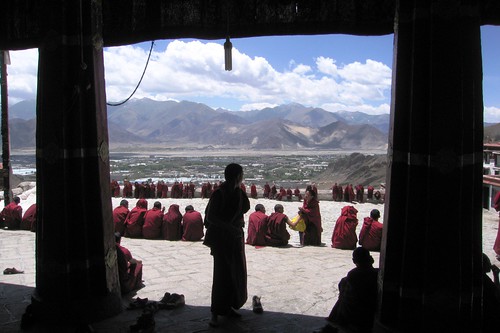
Another great view. See the young monks carrying bags of buns.
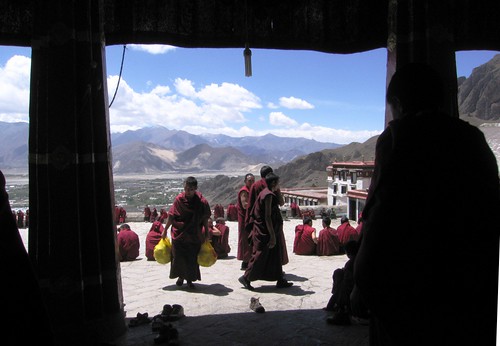
Drepung: The monk with the blue apron has a bucket filled with potato curry.
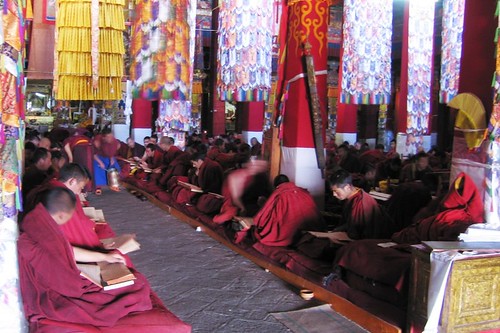
Drepung: Closer view of lunch time.
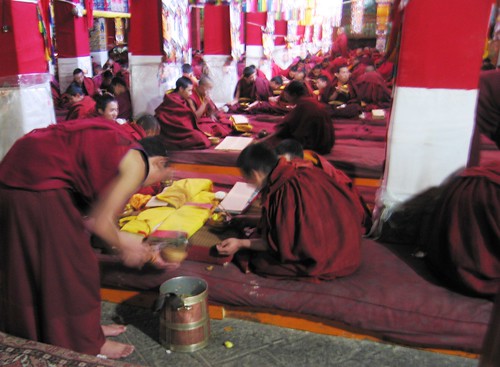
Drepung: Monks carry bucket after bucket of food in from the kitchen next door.
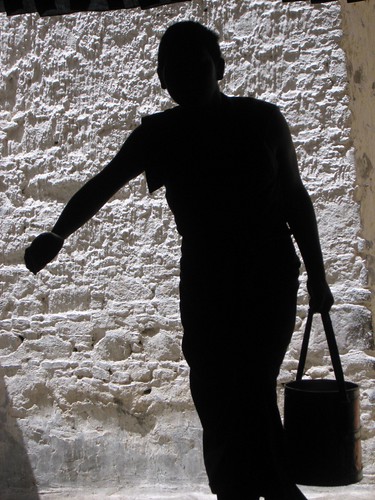
Drepung: Some of the religious figures in the main hall.
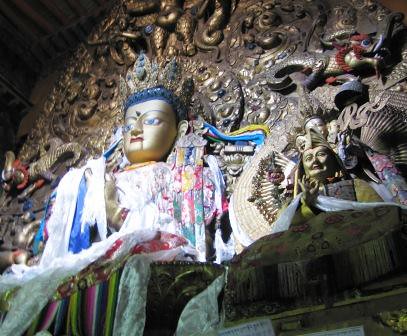
Drepung: The monks leave their shoes outside the assembly hall.
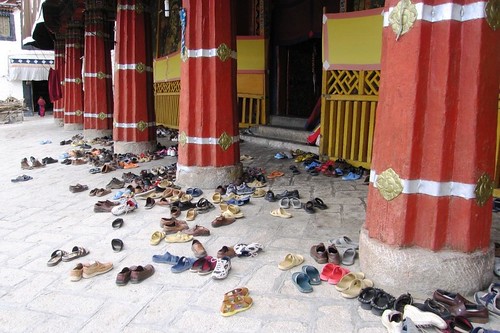
Drepung: The guy in the lower left tried to conceal is cell phone when he saw my camera.
Note the brightly colored hangings.
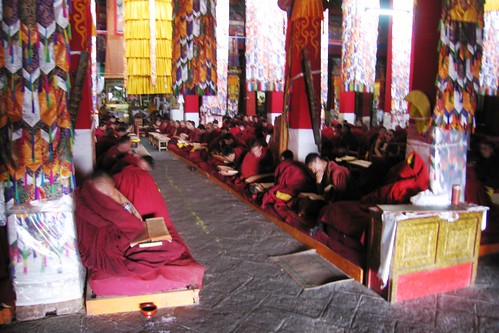
Drepung: Monks study the sutras after lunch.
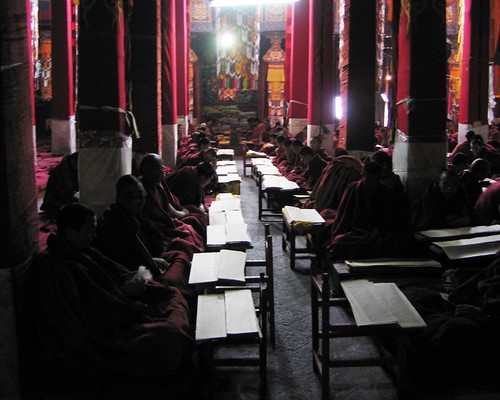
Drepung: Another of the religious figures in the main hall. Drepung: From the roof of the main assembly looking down to the monks. You can get a good look at the brocade hangings.
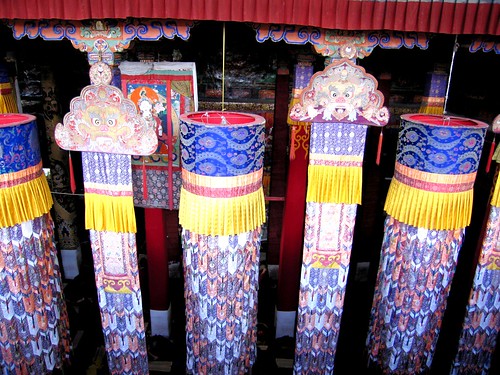
Drepung: The outside of one of the other buildings. Note the solar water heaters in foreground.
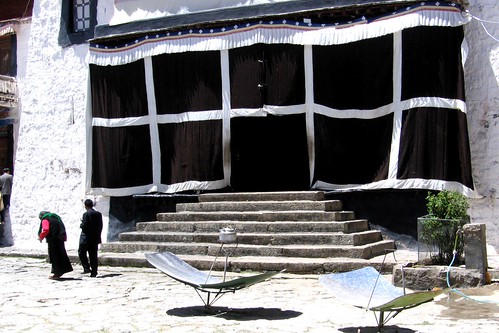
Drepung: Sun-Ling resting in front of a dormitory.
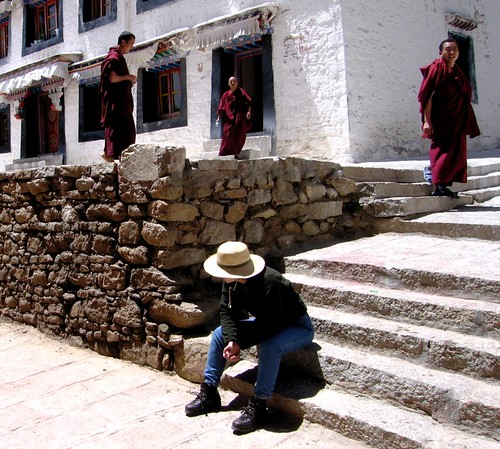
Drepung: These prayer flags have inscriptions and are very colorful.
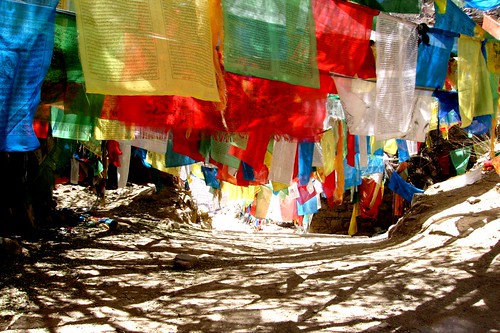
Drepung: Wall painting.
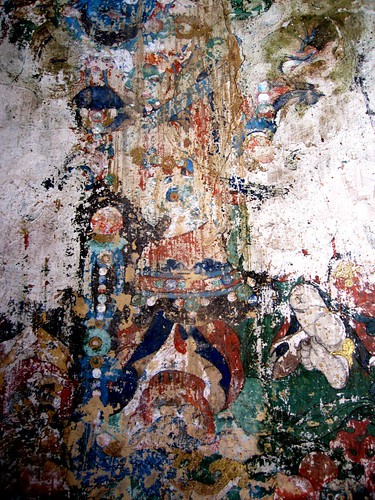
Drepung: Sun-Ling resting as we enjoy the view of the valley from the rooftop of one of the highest buildings.
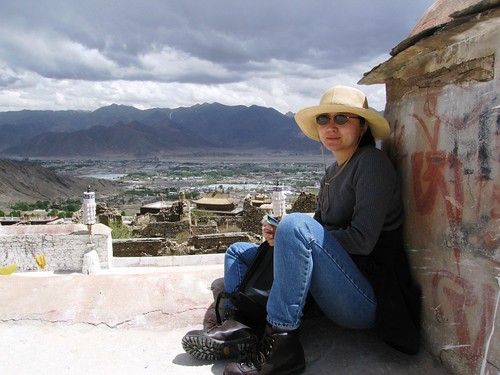
Drepung: On the way back down, we noticed some pilgrims circling a stupa. See next two photos.
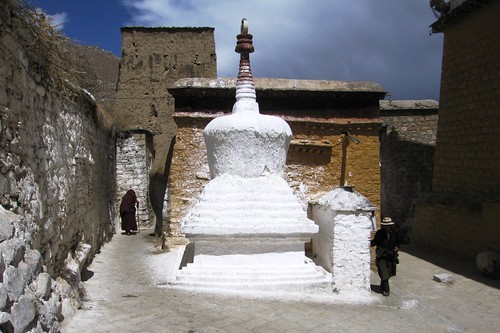
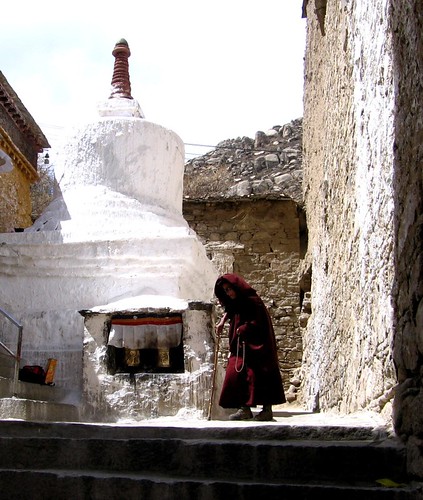
Drepung: Another wall painting. This is a familiar scene in Lhasa of a monk and a tiger.
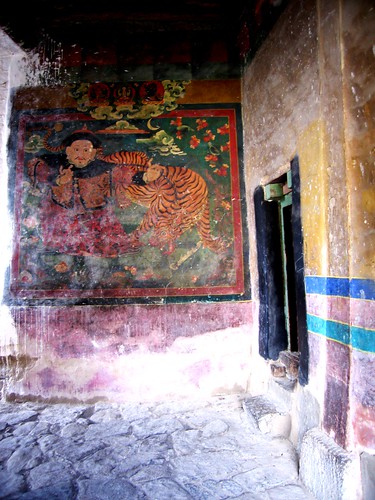
Drepung: These folks are leaving the monastery building with grandson after performing some rituals.
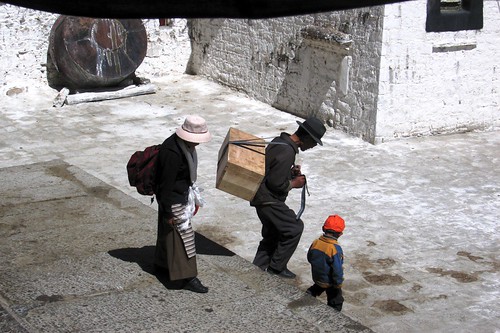
Drepung: Riding down the hill with our Spanish speaking buddies.
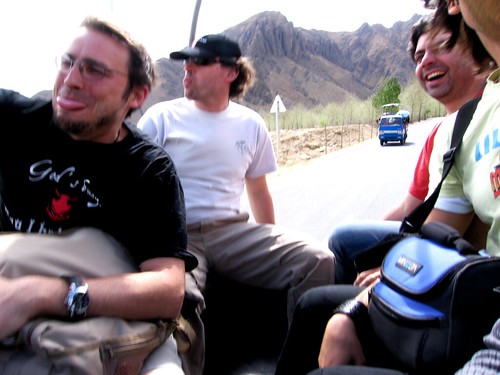
Back at the hotel, the staff was getting ready for a party to celebrate the opening of the new bar (upper left corner).
This celebration would last several days.
